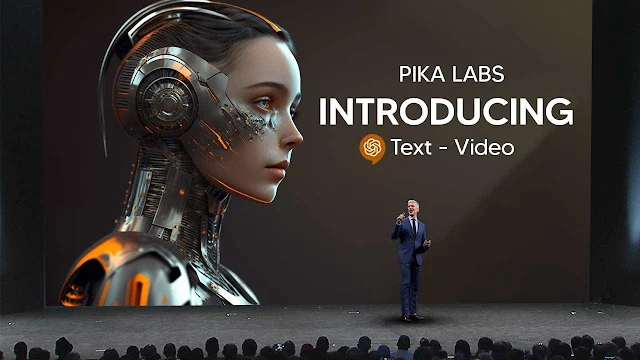
The Rise of Text-to-Video AI
The field of text-to-video AI has been gaining significant attention and investment in recent years. While it hasn't been as widely covered as other AI domains, researchers and companies have been working tirelessly to push the boundaries of what's possible. One company that has recently emerged as a frontrunner in this space is Pikalabs, which has developed a groundbreaking new approach to text-to-video generation.
Pikalabs' Innovative Approach
Pikalabs' text-to-video technology differs from previous models in a significant way. Rather than relying solely on text-to-video conversion, the company has incorporated a unique "Driving Image" concept. This approach involves using a reference image as a starting point, which is then animated and transformed based on the provided text prompt. This combination of visual and textual input has resulted in a level of coherence and realism that surpasses many of the previous text-to-video solutions.
Pushing the Boundaries of Text-to-Video
The examples showcased by Pikalabs and other users of their technology are truly impressive. From realistic animations of natural scenes to stylized cartoon interpretations, the versatility of this new text-to-video approach is evident. One particularly noteworthy example is the "Batman: The Animated Series" style cartoon illustration, which captures the essence of the iconic character and his gritty, Noir-inspired world.
Challenges and Limitations
While Pikalabs' technology represents a significant leap forward in text-to-video AI, it is not without its challenges. The current models still struggle with maintaining high frame rates, resulting in some visible lag or choppiness in the animations. Additionally, the overall resolution of the generated videos can be lower than desired, likely due to limitations in processing power or efficiency.
Comparison to Existing Solutions
Pikalabs' text-to-video technology can be compared to other prominent players in the field, such as Runway and Xeroscope. While Runway has been considered the gold standard for text-to-video generation, the examples showcased by Pikalabs suggest that their approach may be more effective in certain scenarios, particularly when it comes to maintaining the coherence and separation of different elements within the video.
The Future of Text-to-Video AI
As the AI industry continues to evolve, the advancements in text-to-video technology are poised to have a significant impact. With the potential for fully automated YouTube channels and other content creation platforms, the ability to generate high-quality, customized videos from simple text prompts could revolutionize the way we consume and create media. While challenges remain, the progress made by Pikalabs and other innovators in this field is a testament to the rapid pace of AI development and the exciting possibilities that lie ahead.
Conclusion
Pikalabs' groundbreaking text-to-video technology has undoubtedly shaken up the AI industry. By combining visual and textual inputs in a unique way, the company has pushed the boundaries of what's possible in this field. While there are still areas for improvement, the examples showcased by Pikalabs and other users demonstrate the immense potential of this technology to transform the way we create and consume video content. As the AI industry continues to evolve, the advancements in text-to-video generation will undoubtedly play a crucial role in shaping the future of media and entertainment.





.jpg)


0 Comments